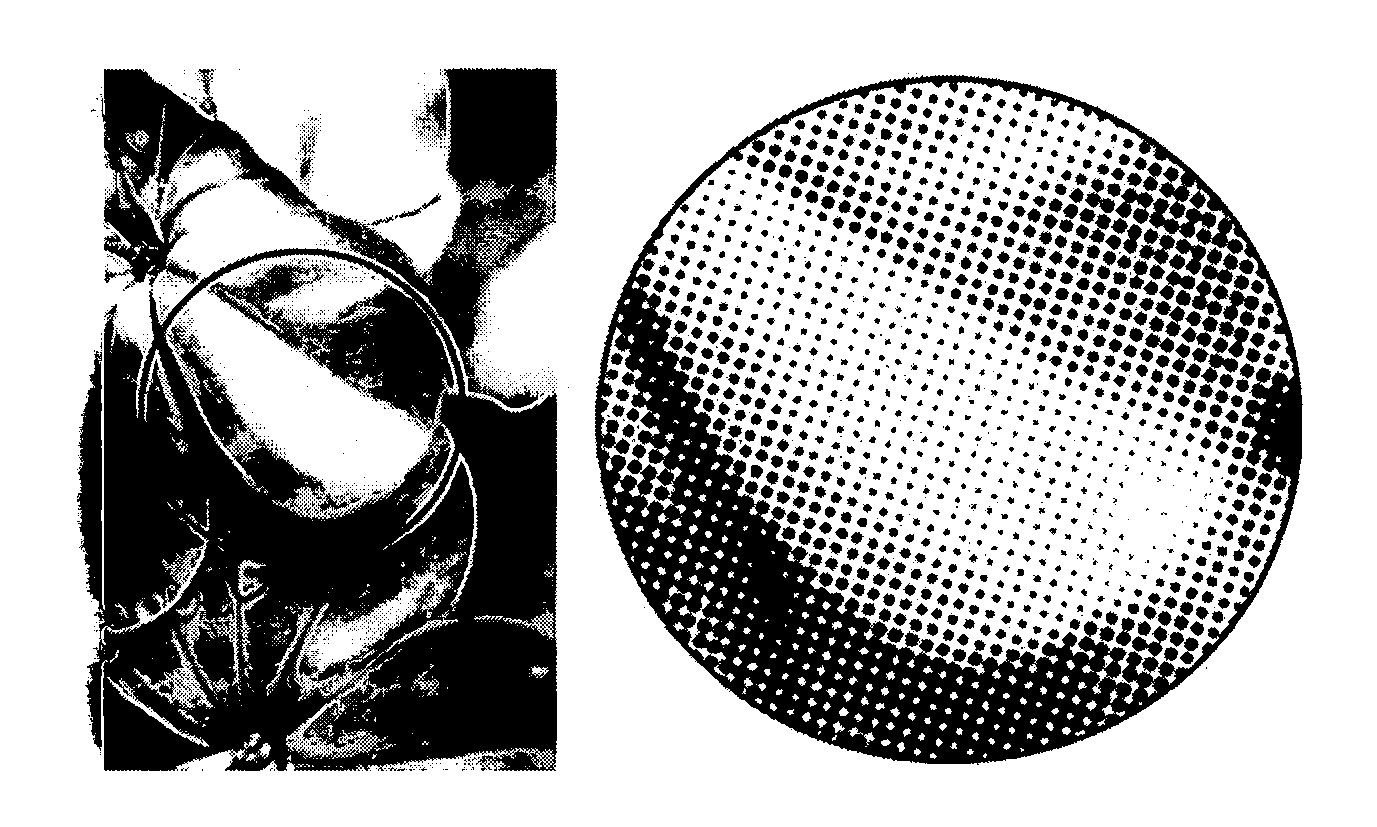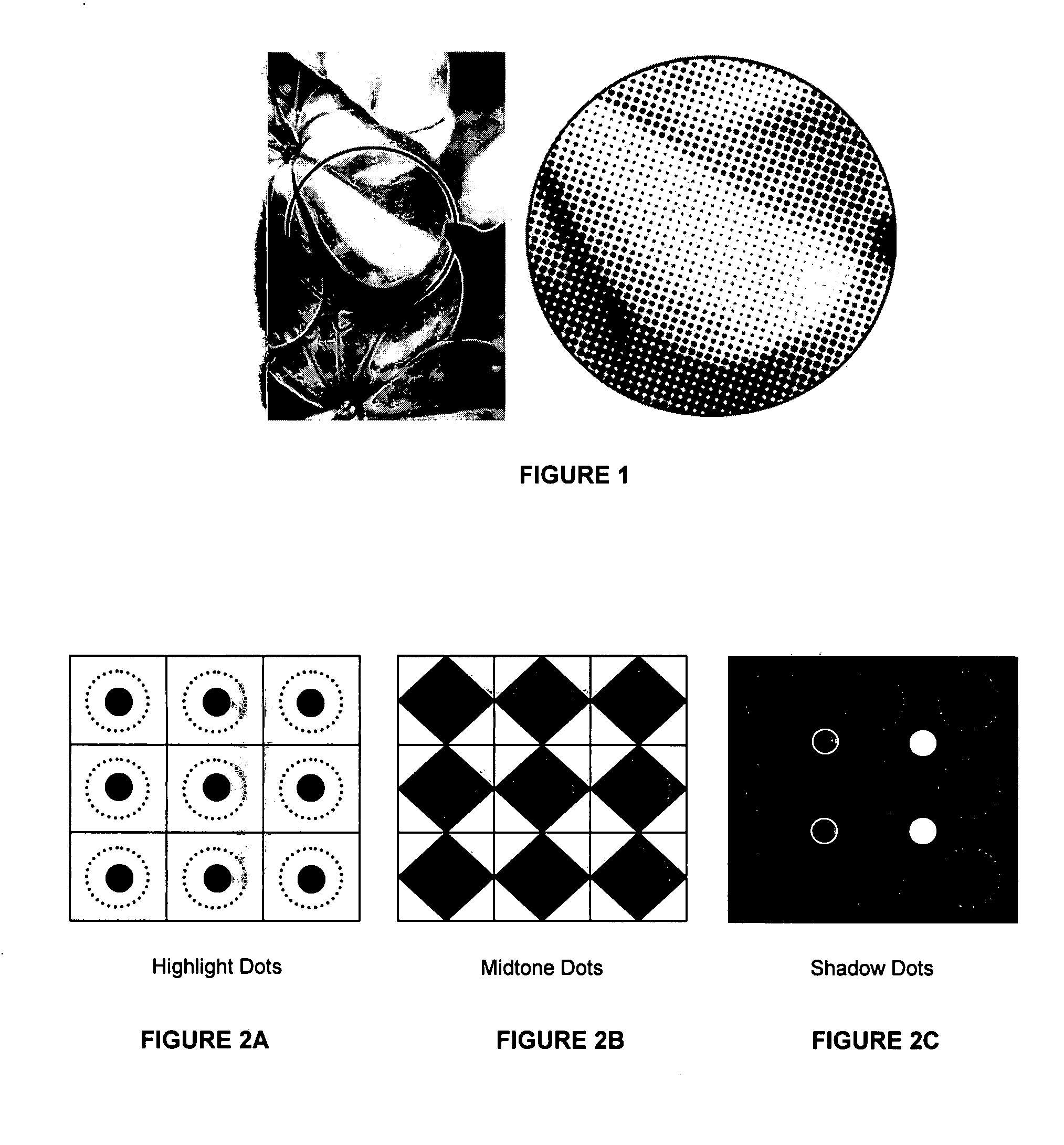Method of pre-exposing relief image printing plate
a relief image and printing plate technology, applied in the field of pre-exposing relief image printing plate, can solve the problems of physical limitations of the process of creating relief image in the plate, the difficulty of maintaining lines and even text using flexographic printing plate, and the difficulty of printing small graphic elements such as fine dots on flexographic pla
- Summary
- Abstract
- Description
- Claims
- Application Information
AI Technical Summary
Benefits of technology
Problems solved by technology
Method used
Image
Examples
Embodiment Construction
[0035]The inventors have surprisingly discovered that an improved relief image printing element can be obtained when the bump exposure is selectively (preferentially) applied to the photosensitive substrate using a screen tint which is matched to and registered with the image. In one embodiment, the printing element is processed in a CTP device.
[0036]Shadow tones decrease with increasing bump exposure, while holding the main exposure constant. This demonstrates that shadow tones fill in when the bump dose is increased. Thus, in order to achieve a better printing surface, i.e., with less fill-in of shadow tones and thus greater definition on the printing surface, the inventors have developed a process for selectively pre-exposing the printing element instead of pre-exposing the entire printing surface as is traditionally done in the prior art.
[0037]For example, U.S. Pat. No. 5,455,416 to Zertani et al., herein incorporated by reference in its entirety, describes a pre-exposure device...
PUM
 Login to View More
Login to View More Abstract
Description
Claims
Application Information
 Login to View More
Login to View More - R&D
- Intellectual Property
- Life Sciences
- Materials
- Tech Scout
- Unparalleled Data Quality
- Higher Quality Content
- 60% Fewer Hallucinations
Browse by: Latest US Patents, China's latest patents, Technical Efficacy Thesaurus, Application Domain, Technology Topic, Popular Technical Reports.
© 2025 PatSnap. All rights reserved.Legal|Privacy policy|Modern Slavery Act Transparency Statement|Sitemap|About US| Contact US: help@patsnap.com


